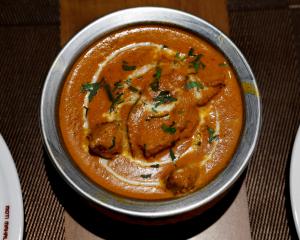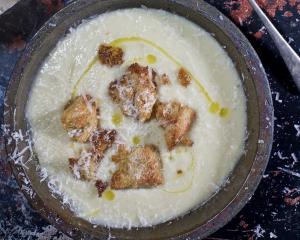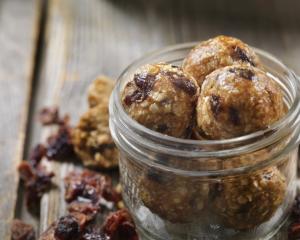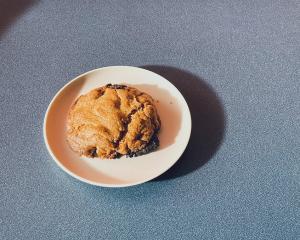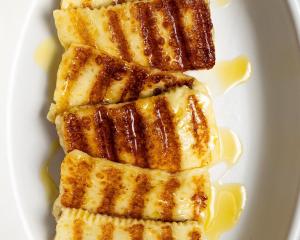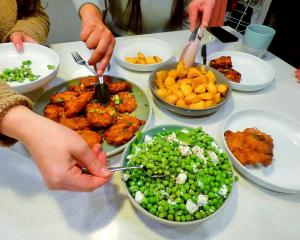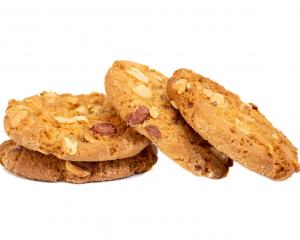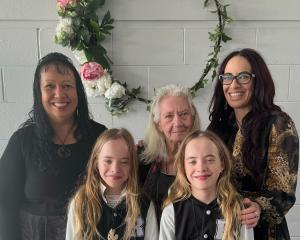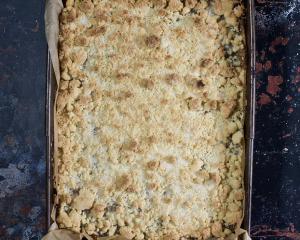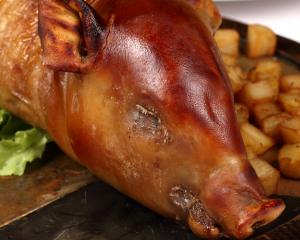
Years ago, no meal was complete without a pudding, but these days we no longer bother with puddings except for special occasions.
Alexa Johnston thinks that's a shame as puddings tend to make people feel happy. It's hard to keep arguing when the pudding comes out, she says.
She is travelling round the country promoting her latest book, What's for Pudding? (Penguin). As with her two earlier cookbooks, Ladies, a Plate and A Second Helping, she has collected classic New Zealand recipes from community cookbooks, compared them and selected the best to rewrite and publish.
Asking people about their favourite puddings, she discovered they were chocolate self-saucing or lemon delicious, and apple crumble.
"I thought these are lovely puddings that are in all the old cookbooks with family variations but they are not super-rich and not super-heavy."
She sometimes finds young people surprised at how light and easy some of the puddings are, like lemon delicious which has only a tablespoon of butter and hardly any flour but is a lovely light sponge over custard.
"They don't leave you feeling all heavy. They are light and sweet and, particularly the milk puddings, probably help you sleep. It certainly stops you roaming round looking for a chocolate biscuit at half past nine at night," she said with a laugh.
A large proportion of her collection of fundraising community cookbooks come from the South.
"I don't know whether it's a Presbyterian thing, but this part of the world seems to me to have an absolute abundance of really good fundraising cookbooks," she said.
"I think that Scottish women are really good cooks and it's my theory that recipes from down here are classics, and really good versions of classics."
It may also be because Prof Helen Leach and others at the University of Otago have been studying food history so secondhand booksellers and others keep the booklets instead of throwing them out, she says.
As a child growing up in Auckland in the 1950s and 1960s, Johnston learnt to bake from her mother's collection of community books and relished the praise she received.
"That set me on the path to being interested and enjoying the processes, and by the time I was in my teens I started cooking properly.
"The big thing in 1968-9 - I got the Cordon Bleu cookery course in weekly instalments, but by that time baking had become something I really loved to do."
Her interest in social history, which tied in with her later training in art history, continued to pique her interest in community cookbooks and the way of life of the women who contributed the recipes.
She pulls a few out of her bag.
A little cyclostyled one between card covers, probably from around 1960, comes from the Awamangu-Pukeawa Association of Presbyterian Women near Balclutha.
The recipe for super fruit sponge (below) comes from it.
Another, from the Roslyn Methodist Church, also around 1960, contains Mrs L. Heaney's never fail flaky pastry.
"I've taught this in about four classes I've done and people are astonished that it's such a crumbly mix, but after three turns [of rolling and folding] you get this fantastically smooth, springy gorgeous pastry."
Because of the "two degrees of separation" in New Zealand, she sometimes meets people at her talks who knew the original contributors of recipes.
In her first book she included a recipe from Mrs Douglas Brown, of Andersons Bay in Dunedin, for cinnamon oysters which was published in the 1951 League of Mothers cookbook.
"You have to tell young people her name wasn't Douglas but that was the correct way to call her, then. Someone said they knew her and she used to teach her the piano and her name was Thelma!"
Johnston wants her cookbooks to help acknowledge women's contributions to our society.
"I felt what those women did for our society and their families, creating connections and warm memories and a sense of belonging and being loved and all that sort of thing, is absolutely priceless.
"These books are taonga - they are filled with treasures. I feel strongly that women's contributions to our society in this and many other aspects are worth celebrating. It's not just a little bit of sentiment, but saying look at these recipes, they are fantastic and they were done by trial and error and getting things right - and often, in pioneering times, in incredibly difficult circumstances," she said.
She is pleased to find that some secondary schools are re-introducing subjects such as cooking, sewing, woodwork and metalwork and that they realise knowing how to do things with your hands gives children confidence and some life skills - and cooking is a particularly important life skill.
"You might not need to cook all the time as women did in the past, but we can choose and that's partly what feminism is about too, having some choice in your life and how you spend your time, but if you don't have the skills to cook or sew then you are going to be having trouble."
Next she is planning a book on another strength of community cookbooks, preserving, jams, jellies, pickles and chutneys - another important life skill, especially as people are now growing vegetables and fruit in their gardens again.
Super fruit sponge
When you bake a sponge topping on fruit, the fruit must be hot when you pour on the sponge mixture. Cold fruit will result in soggy, uncooked batter under the sponge crust.
Some sponge toppings are like a butter cake with equal weights of butter, sugar, flour and eggs, but this extremely light recipe is my favourite. It comes from a small, untitled cyclostyled booklet compiled around 1960 by the Awamangu-Pukeawa Association of Presbyterian Women, near Balclutha.
I think plums are particularly good with this sponge topping.
Ingredients
4 cups hot stewed fruit
For the sponge
2 eggs cup sugar (100g)
cup cornflour (55g)
1 tsp flour
tsp baking powder
slivered almonds for garnish
Getting ready
Preheat the oven to 350degF/180degC.
Have 4 cups hot, sweetened stewed fruit in a large ovenproof dish.
Separate the eggs. Sift together the dry ingredients.
Making the pudding
1. Beat the egg whites until stiff, add the sugar and beat again until very white and fluffy. Beat in the egg yolks, then gently fold in the sifted dry ingredients.
2. Pour the batter over the hot fruit, sprinkle the top with a little more sugar and a few slivered almonds, and bake for about 30 minutes until the sponge is golden and well risen. Enough for 6-8 people.
Or there's this one ...
In this version the fruit goes on top of the sponge mixture, which then rises up around the fruit as it cooks. It makes a lovely-looking pudding. From Mrs J. MacGregor, who contributed it to Tasty Fare from the Gleniti Presbyterian Worship Centre, Timaru, around 1970.
Beat an egg with 2oz/55g sugar, then add 2oz/55g melted butter.
Sift over 2oz/55g flour and tsp baking powder. Fold everything together and pour into a buttered pie dish.
Put dollops of damp stewed fruit all over the cake - about a cupful in all.
Bake 20-30 minutes in a hot oven (400degF/200degC).
Perfect made with stewed or very ripe fresh peaches and a handful of frozen raspberries.
• Reprinted with permission from What's for Pudding? published by Penguin NZ, RRP $50. Copyright - text and photographs Alexa Johnston, 2011

